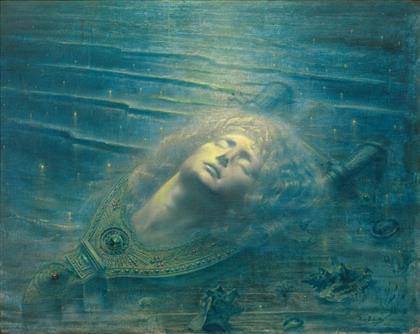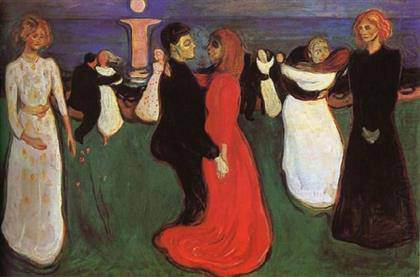
Jean Delville: “Orpheus”, 1893
‘Mystical Symbolism’ at Guggenheim Museum Guggenheim Museum presents ‘Mystical Symbolism: The Salon de la Rose+Croix in Paris, 1892–1897’ first-ever museum exhibition on the historic salons that brought late 19th-century radical and reactionary artists together. June 30–October 4, 2017]]>
Source: Guggenheim Museum
The Solomon R. Guggenheim Museum presents ‘Mystical Symbolism: The Salon de la Rose+Croix in Paris, 1892–1897’, the first museum exhibition on this revelatory and significant yet frequently overlooked series of Salons. Mysterious, mythical, and visionary themes, often drawn from literature, prevailed in the art of the six exhibitions, which were held annually in Paris from 1892 to 1897. Images of “femmes fragiles” and “fatales”, androgynous creatures, chimeras, and incubi were the norm, as were sinuous lines, attenuated figures, and anti-naturalistic forms. Featuring highlights from the Salons, the Guggenheim exhibition includes approximately forty works by a cross section of artists—some familiar, others less so—and invite a fresh look at and new scholarship on the legacies of late nineteenth-century Symbolist art.
In the spring of 1892 Joséphin Péladan (1859–1918), author, critic, and Rosicrucian, organized the first Salon de la Rose+Croix at the Galerie Durand-Ruel in Paris. Showcasing mystical Symbolist art, particularly a hermetic and spiritually devoted vein favored by the eccentric Péladan, the annual Salons were cosmopolitan in reach and served as a crossroads, gathering the work of artists from Belgium, Finland, France, Italy, the Netherlands, Spain, and Switzerland. Benefiting from extensive research to identify artworks shown in the original exhibitions, “Mystical Symbolism” encompasses painting, work on paper, and sculpture by artists such as Antoine Bourdelle, Rogelio de Egusquiza, Jean Delville, Charles Filiger, Ferdinand Hodler, Fernand Khnopff, Alphonse Osbert, Armand Point, Georges Rouault, Carlos Schwabe, Alexandre Séon, Jan Toorop, Ville Vallgren, and Félix Vallotton.
”Mystical Symbolism” provides an opportunity to explore the diverse and sometimes opposing concepts that informed Symbolism in the 1890s. Hinging on central artworks shown at each Salon, the exhibition teases out seminal tropes, such as the role of Orpheus, adulation of the 15th-century early Renaissance Italian painters known as the Primitives, and the cult of personality that developed around figures including Richard Wagner and Péladan himself. Accompanied by historical documents and set in galleries adorned with lush furnishings, the exhibition conveys the spirit of the Salon experience. A musical component with work by Erik Satie and others underscores the key role occupied by composers for the movement.
Related content
The School of Paris at Guggenheim Museum Bilbao (exhibition, 2016)
Follow us on:

